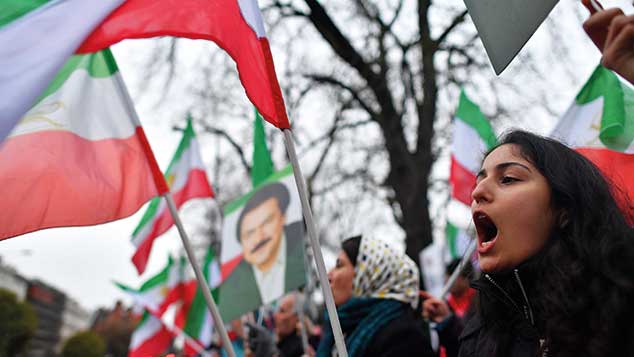
The “bullish case for crude is taking hold”, says Liam Halligan in The Sunday Telegraph. Brent futures have jumped by almost 40% in six months and 140% since oil prices bottomed in January 2016. Oil has now reached $70 a barrel for the first time since early 2015, and is still rising. We’re in the strongest period of oil demand growth since the crisis now that a synchronised global recovery is taking hold. China is “stockpiling oil with gusto”. Worldwide daily demand was 90.6 million barrels per day (mbpd) in 2012, but has now reached 97mbpd.
We have also seen “the return of a geopolitical risk premium”, says Jeremy Warner in The Daily Telegraph. This is worth “something like $10 a barrel on the price”. The Trump administration has threatened to impose new sanctions against Iran, while popular protests there could embolden regional foe Saudi Arabia, “now backed to the hilt by a seemingly bellicose-minded US president, into doing something really silly”.
Meanwhile, a deal between oil exporters’ cartel Opec and Russia to trim output has also helped mop up much of the global glut that developed in recent years. In the past such agreements have tended to amount to little as Opec members have often cheated on production quotas to maximise revenues. But this time round the deal has stuck. Oil inventories in the industrialised world have shrunk to a three-year low, according to the International Energy Agency.
Shale puts a lid on it
But they could soon be on the way up again. As Warner points out, around $55 a barrel is the breakeven point for US shale-oil production, and it is coming back with a vengeance. The recovery in prices over the past two years has underpinned a steady increase in the number of active drilling rigs. America’s Energy Information Administration is pencilling in a 100% jump in US shale production in 2018. Overall US crude output is set to reach a new record of 10.3mbpd this year.
And while the market appears to be shrugging off this prospect for now, say Alison Sider and Stephanie Yang in The Wall Street Journal, just wait until the production jump becomes increasingly visible later in the year. Ed Morse of Citigroup notes that geopolitical worries can abate quickly too.
The upshot? Unless there is a serious supply disruption, $65 a barrel is a “natural ceiling” for the oil price, he reckons. It’s unlikely oil can regain its previous peaks, even with a fast-growing global economy, agrees Warner. “The oil uber bulls are again about to be disappointed.”